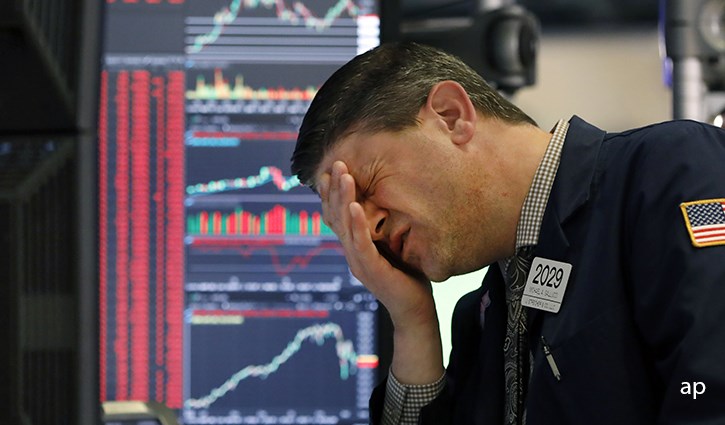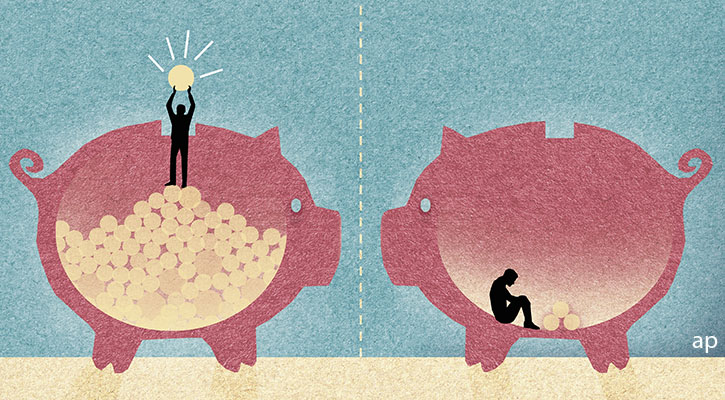
Zoombies I, II and (Maybe) III
How I Zoom-ed to heaven, hell, and back again
In 2018 Morningstar replaced its legacy video conferencing system with a newfangled system called Zoom (ZM). It was immediately clear that Zoom worked far better than its predecessor. In April 2019 I did a little bit of research and learned that Zoom’s corporate clients numbered in the hundreds. Hundreds?! I thought that every big company in America should be using this product. I read a research report from a big brokerage firm (Morningstar was not yet covering the stock) and decided to dip my toe in the water with a purchase of 200 shares at $67.
Most stocks plummeted when the Covid-19 bear market hit in March 2020, but Zoom merely dipped, then took off like a rocket as it became clear white-collar workers would have to operate from home for an extended period. COVID was a perfect storm for Zoom.
Meanwhile, the bargain hunter in me said, "Zoom is great, but some stocks I’ve wanted to own are now cheap and Zoom looks expensive based on Morningstar’s analysis." So on March 12, 2020, I sold Zoom at $113. I used the proceeds to buy shares in iShares Russell 2000 (IWM), a small-cap index ETF.
By October ZM’s price had risen to $559. I was kicking myself. How had I blown it on a once-in-decade pick – which I had gotten right at first? I kept telling myself that I’m a long-term investor and it would be OK. Zoom would come down to earth again.
It took the 2022 bear market to bring Zoom’s valuation back down. According to both Morningstar and that other brokerage research, the stock is significantly undervalued. I bought more shares at $73.47 in September.
This time I’m going to hold on until the market price approaches the target price or my thesis about the company changes. I did not sell IWM to fund the ZM purchase. My investment in IWM has returned 53% (cumulative) since April 2020.
Trading Zoom for the Russell 2000 felt like a big mistake for a long time. At the moment I feel vindicated, but who knows, this time next year we could be discussing an even more horrifying sequel!
Stock investing mistake submitted by Syl Flood, editorial director for Morningstar

House of Rising Horror: Adjustable Mortgages
You can only watch in ghoulish disbelief as your mortgage payments go higher, and higher, and higher!
My Halloween horror story this year (to which I'm sure many can relate) has to do with the rise in interest rates. Central banks everywhere have been raising their benchmark rates in a fight against fight inflation.
The clearest impact of this rise in interest rates (at least in my case) is the increase in the cost of my mortgage (I have a variable mortgage, the most common in Spain, linked to the Euribor). In my case this rise in my mortgage will coincide with Halloween. The bank has already sent me a simulation. In November I will pay 16% more than in October. It is a lot!
It's not all bad, though. If you look at a chart of the Euribor you will realize that we are simply returning to normal, because in these past years, I have been enjoying the benefits of falling interest rates. The lesson to be learned here that after strong gains there can also be strong losses.
Investing lesson by Fernando Luque, senior investment analyst, Morningstar Spain

Little Weed of Horror – Another Stock Mistake Story
Not all purchases make sense – both for investors, and companies
The recent push from US President Joe Biden on marijuana reform was likely bittersweet for most cannabis investors who’ve stuck it out only to watch their stocks flounder for years.
These slow burns can be an annoyance, but if you’re optimistic and a long-term investor, you can at least hang onto the hope of a return in value, or more. This, however, does not apply to those who held cannabis stocks that were horror stories.
One trade that haunts me was my purchase of iAnthus (IAN) (this was when it was still cool to add “i” at the start of a name). The company had a great plan to expand and many dispensaries throughout multiple states but perhaps grew too quickly…and expensively... Not long after, the company made a "transformational" acquisition of a competitor for US$1.6 billion, and its stock tanked.
The following year, iAnthus announced it had defaulted on a US$4.4 million interest payment. Later that same year, shareholders were informed they now collectively held only 2.75% of the equity after a recapitalisation agreement. I still have most of my original shares. They’re now worth more as a (very) small reminder to tread carefully in risky stocks.
Stock investing mistake submitted by Andrew Willis, senior editor, Morningstar Canada

The BooHooDook
Sometimes, a company’s name can tell you what to expect – or why value chain scares can leave investors in tears
Here in the UK, online apparel retailer Boohoo (BOO) has fast become a case study of how environmental, social and governance issues – both within the company and in its wider value chain – can cause nightmares for shareholders. Boohoo grew rapidly after floating on the London Stock Exchange in 2014 and its share price grew from an IPO price of £0.50 to an all-time high of over £4.00 in 2020.
Sceptics have long asked questions about whether "fast fashion" can ever truly be sustainable, given the negative environmental impact of producing clothes to be worn a few times and quickly discarded.
Despite this, the company was rated highly on its ESG credentials by several agencies and included in many sustainable investment funds. However, in July of 2020, significant failings in Boohoo’s UK clothing supply chain came to light including evidence of unsafe working conditions, illegal pay practices and modern slavery.
Boohoo’s share price fell by 33% in two days after the news broke. Subsequent governance concerns have helped drive the price well below its IPO level today – more than 90% down from its peak. There is much debate these days about how investors should identify which ESG risks are "financially material". What’s clear from this scandal is that ESG risks certainly can switch from having high social or environmental impact to having a huge share price impact, often very quickly and with little warning.
It’s also clear that investors need to keep an eye not just on what the companies they invest in are doing, but also on what’s happening in their value chain, lest the "Boohoo effect" cause them misery!
Story submitted by Lindsey Stewart, director of investment stewardship research

Let the Right Fund In – A Lesson to Live By
Make sure you know what you’re buying before you buy it!
My Halloween Horror Story is like a bad horror movie – you’ll be screaming at your screen that I should RUN AWAY from the second sentence, this being the first.
On the Second of June, 2021, deciding I had diamond hands,![]()
![]() I bought what I thought was a regular Bitcoin ETF. It was helpfully called the Betapro Bitcoin ETF (HBIT). Reader, it was not a regular Bitcoin ETF. According to the fund house literature, "BetaPro ETFs offer daily leveraged (up to 2x), inverse (-1x) and inverse leveraged (up to -2x) exposure across a variety of indices, sectors, asset classes and commodities."
I bought what I thought was a regular Bitcoin ETF. It was helpfully called the Betapro Bitcoin ETF (HBIT). Reader, it was not a regular Bitcoin ETF. According to the fund house literature, "BetaPro ETFs offer daily leveraged (up to 2x), inverse (-1x) and inverse leveraged (up to -2x) exposure across a variety of indices, sectors, asset classes and commodities."
Long story short, in the five days I owned it, Bitcoin lost 12%, and my investment fell 17%. Needless to say, I immediately sold, and ran back into my diversified equity ETF. Lessons: Never buy what you don’t THOROUGHLY understand, and always, ALWAYS do your research.
Investing lesson submitted by Ruth Saldanha, editorial manager, Morningstar Canada

The Camecoville Horror
When things go nuclear – very, VERY slowly...
I started covering Cameco Corp (CCO) in 2017, though we had been covering the stock consistently since 2008 under a couple of other analysts. The unfortunate 2011 Fukushima nuclear disaster led to a shift on the market’s outlook on the future of nuclear. Prices bled from US$70 per pound of uranium prior to the accident to less than half by November 2016, leading Cameco shares to fall 80% over that period.
By then, we saw shares at severely discounted, as the market seemed to price in permanently lower uranium prices. But we continued to argue those prices were unsustainable even as shares dipped even lower. But it wasn’t until the election of U.S. President Biden that sentiment finally turned, shares surging 40% by year end. Uranium prices have improved too, now hitting levels not seen since the early 2010s.
No doubt many investors grew frustrated with how long the story took to play out. Patience is hard, and many investors lose conviction in the face of time and second guess that their thesis was ever right.
Story submitted by ESG analyst Kristoffer Inton

Don’t Answer the Door (Or The Phone)
The call isn’t coming from inside the house, but from a scammer who could be 10,000 miles away – or next door
Earlier this month, I was eating a pizza with a friend in Turin. She told me that she had received a phone call from "Mr. Amazon", who pitched to her an opportunity to invest in Amazon (AMZN) stock. She hadn’t invested in stocks before, but was intrigued because, in her own words, "Amazon is a large company with a worldwide presence and I often purchase goods through Amazon". At that moment, she asked me: "why is Mr. Amazon calling me? How did he get my phone number?" Readers, it was not "Mr. Amazon," but an investment scam, aimed at getting her to hand over money.
The fact is, investment scams are ubiquitous, and are getting more complex each day. They can seem perfectly legitimate, complete with websites, testimonials and marketing material. Luckily, there are some warning signs that you can use to avoid falling victim to these predators. Here’s a list of some, not all, possible red flags:
- Unsolicited approaches – these could be offers by phone call, text message, email, or a person knocking on your door;
- Vague or unclear answers to your questions;
- Persistent phone calls from the operator trying to induce you to invest (so-called Cold Calling);
- Demands that you make a quick decision;
- The firm or operator doesn’t allow you to call them back, or you are given with only a mobile phone number to contact them;
- The information provided is not confirmed on the firm’s website (if there even is one!);
- You’re being offered a high return on your investment, but you are told it’s low risk;
- You’re promised easily achievable returns and incentives to entice you to invest;
- It is harder to spot, because many of these are sophisticated, but the reviews could be faked, as could the "other clients who have already signed up to this great, unique opportunity";
- In longer term scams, the perpetrators might try to build friendship with you to lull you into a false sense of security;
- In short, be vigilant, and don’t part with your hard-earned money unless you’re absolutely sure it isn’t a scam!
Investing lesson submitted by Sara Silano, Editorial Manager for Morningstar Italy

Train to Brexit
If you trade more aggressively and frequently in volatile market conditions, you’ll end up in the bad place
At Halloween we enjoy being frightened, but fear and surprise tend to lead to stock investing mistakes. When we are frightened we tend to respond in one of three predictable ways: we either try to fight off whatever is scaring us, we flee or we freeze. Professional investors often opt to "fight’" which in reality means trading more frequently and more aggressively. In volatile market conditions, this can lead to terrible outcomes.
Given the UK's current political and economic turmoil, the Brexit referendum in 2016 provides a good example of how this response can lead to poor outcomes. I know of portfolio managers that stayed up all night trading on each twist and turn of the referendum results in the belief that they could create additional returns by identifying likely changes in market prices and acting more quickly than other investors. This combination of caffeine-fueled over-confidence, a short term horizon and lack of sleep cost their clients dearly.
If horror films have taught us anything, it is that when we are scared we tend to make poor decisions. Investment decisions should be made when we calm and well-rested and able to focus on the long term. Such an approach is a poor plot for a movie, but a good way to secure one’s financial future.
Story submitted by Dan Kemp, Global CIO for Morningstar Investment Management











.png)










